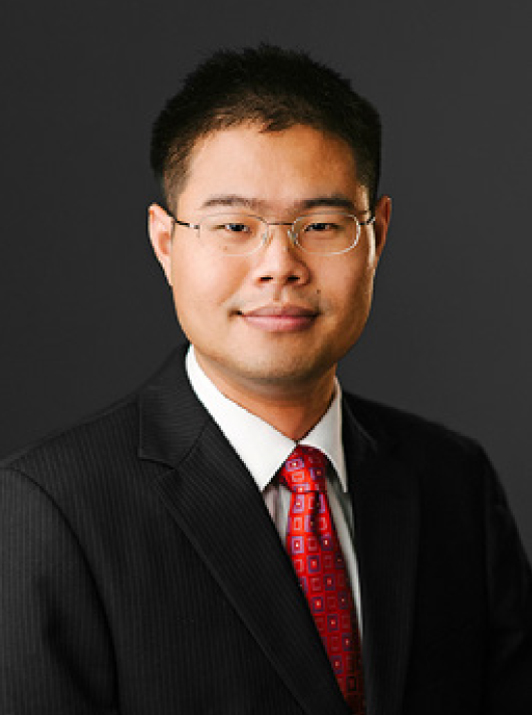Sniffing out gases with precision
Follow CDE
PDF Download

Flexible, shape-shifting organic frameworks are capable of sensing gases with high precision for applications in adsorption, separation and storage.
The human nose, capable of sniffing out over a trillion scents, still struggles to identify tricky gas combinations, especially at specific levels of sensitivity. This is where sensors come in, as a concoction of carefully calibrated materials teases out the presence of trace gaseous molecules camouflaged within the atmosphere.
Sensors are to many industries today what the five senses are to us. They scour for harmful substances in drinking water, help capture greenhouse gases from industrial emissions, detect hazardous chemical leaks in factories, and even suck carbon dioxide out of thin air, among myriad other applications. Being able to discern gas molecules accurately offers a multitude of benefits, underscoring the importance of developing advanced sensor technology in modern industry.
At the College of Design and Engineering, National University of Singapore, a research team led by Associate Professor Zhao Dan from the Department of Chemical and Biomolecular Engineering has developed covalent organic frameworks (COFs) capable of separating and “sniffing out” certain gas molecules with precision. The material, which can be used in sensors, has versatile uses ranging from gas adsorption to separation to storage.
Their findings were published in Nature Materials on 10 April 2023.
Associate Professor Zhao Dan led a team to develop materials capable of sensing gases with high precision and specificity.
"Metal-organic frameworks (MOFs) are a commonly researched subset of SPCs in sensor technology, but their structural stability falls short for large-scale industrial applications."
"Metal-organic frameworks (MOFs) are a commonly researched subset of SPCs in sensor technology, but their structural stability falls short for large-scale industrial applications."
Stability and flexibility are the mainstay
Soft/flexible porous crystals (SPCs), characterised by their spongy structure riddled with tiny pores, stand apart from their more rigid counterparts due to their unique ability to morph in response to environmental changes.
Because of their shape-shifting capability, SPCs have the potential to interact with a plethora of molecules dynamically. For instance, when exposed to different conditions, their pores can expand, contract, or change shape, dictating how surrounding molecules are adsorbed, filtered, or separated. This key feature positions these materials as prime candidates for various applications, from smart filtration to controlled drug release to the separation and storage of gases.
“Metal-organic frameworks (MOFs) are a commonly researched subset of SPCs in sensor technology, but their structural stability falls short for large-scale industrial applications.”
“Metal-organic frameworks (MOFs) are a commonly researched subset of SPCs in sensor technology, but their structural stability falls short for large-scale industrial applications,” says Assoc Prof Zhao. “Meanwhile, COFs are emerging as highly stable alternatives, though they still lack the necessary flexibility to interact with different types of gas molecules.”
“Considering the increased complexity of today’s industrial processes and the diverse cocktails of gases involved, coupled with the urgency of the green transition, both stability and flexibility have become two indispensable features required for the advanced sensors of tomorrow,” adds Assoc Prof Zhao.
A rare arrangement
The team’s breakthrough solution came in the form of atropisomerism — a type of stereoisomerism characterised by a restricted rotation around a bond within a molecule, leading to distinct spatial arrangements of the atoms. This property is rare in crystals with infinite framework structures, such as those found in COFs, highlighting the novelty of their approach.
"We plan to broaden the range of COF-based atropisomers and enhance their capabilities by fine-tuning crystal growth conditions, topology, linkage flexibilities and chemical bonding."
"We plan to broaden the range of COF-based atropisomers and enhance their capabilities by fine-tuning crystal growth conditions, topology, linkage flexibilities and chemical bonding."
"We plan to broaden the range of COF-based atropisomers and enhance their capabilities by fine-tuning crystal growth conditions, topology, linkage flexibilities and chemical bonding."
While COF-320 maintained a rigid framework, its isomeric counterpart was far more flexible, possessing the capability to adjust its pore structures in response to different gases, thus showcasing a diverse range of gas adsorption behaviours.
“Our experiments have shown that COF-320-A can undergo internal pore expansion, effectively capturing key industrial gases such as ethylene, carbon dioxide and acetylene,” adds Assoc Prof Zhao. “This adaptability not only enhances gas sensing accuracy but also opens up new applications in industrial gas separation and storage.”
With practical applications soon a reality, the researchers have their sights set on further optimising these COFs. “We plan to broaden the range of COF-based atropisomers and enhance their capabilities by fine-tuning crystal growth conditions, topology, linkage flexibilities and chemical bonding,” adds Assoc Prof Zhao. “COFs with high stability and dynamic frameworks can be widely applied in gas sensing, storage and separation.”
Read More
View Our Publications ▏Back to Forging New Frontiers - July 2024 Issue
If you are interested to connect with us, email us at cdenews@nus.edu.sg









